Advertisements
Advertisements
Question
- An electrostatic field line is a continuous curve. That is, a field line cannot have sudden breaks. Why not?
- Explain why two field lines never cross each other at any point?
Solution
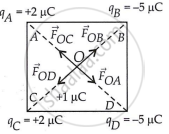
As, `vecF_(OA) = vecF_(OC) or vecF_(OA) + vecF_(OC) = 0` ...(i)
Therefore, at zero, the net force on the charge is + 1 µC.
`vecF = vecF_(OA) + vecF_(OC) + vecF_(OB) + vecF_(OD) or vecF = 0`
An electrostatic field line is a continuous curve because a charge experiences a continuous force when traced in an electrostatic field. The field line cannot have sudden breaks because the charge moves continuously and does not jump from one point to the other.- If two field lines cross each other at a point, then electric field intensity will show two directions at that point. This is not possible. Hence, two field lines never cross each other.
APPEARS IN
RELATED QUESTIONS
Why do the electrostatic field lines not form closed loops?
Why do the electric field lines never cross each other?
Which among the curves shown in the fig. cannot possibly represent electrostatic field lines?
(a)

(b)

(c)
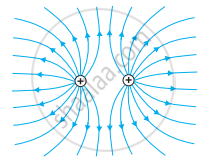
(d)
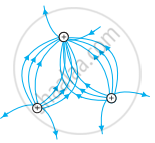
(e)
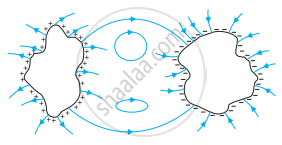
(a) Derive an expression for the electric field E due to a dipole of length '2a' at a point distant r from the centre of the dipole on the axial line.
(b) Draw a graph of E versus r for r >> a.
(c) If this dipole were kept in a uniform external electric field E0, diagrammatically represent the position of the dipole in stable and unstable equilibrium and write the expressions for the torque acting on the dipole in both the cases.
The figure shows the field lines on a positive charge. Is the work done by the field in moving a small positive charge from Q to P positive or negative? Give reason.
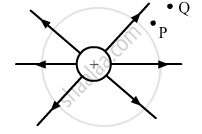
Two bar magnets are quickly moved towards a metallic loop connected across a capacitor ‘C’ as shown in the figure. Predict the polarity of the capacitor.

The intensity of the electric field at a perpendicular distance of 0·5 m from an infinitely long line charge having linear charge density (λ) is 3-6 × 103 Vm-1. Find the value of λ.
Draw the pattern of electric field lines, when a point charge –Q is kept near an uncharged conducting plate.
Answer the following question.
Draw the pattern of electric field lines when a point charge +q is kept near an uncharged conducting plate.
Explain why two field lines never cross each other at any point?
Figure shows electric field lines in which an electric dipole P is placed as shown. Which of the following statements is correct?
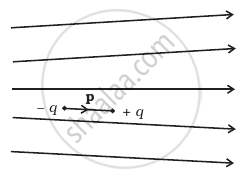
Which of the following figures represent the electric field lines due to a single negative charge?
An electron enters an electric field with its velocity in the direction of the electric lines of force. Then ______
In figure, two positive charges q2 and q3 fixed along the y axis, exert a net electric force in the + x direction on a charge q1 fixed along the x-axis. If a positive charge Q is added at (x, 0), the force on q1
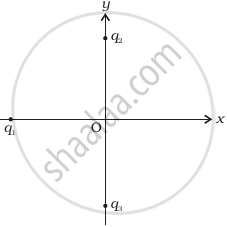 (a) |
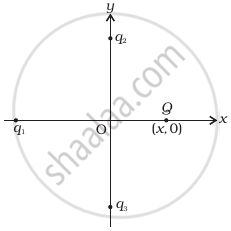 (b) |
